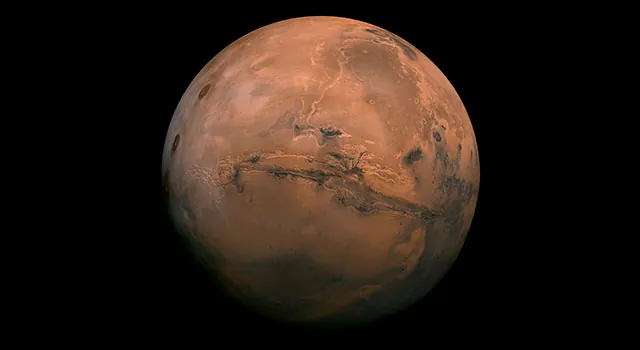
Shocking Cosmic Collision: Scientists Capture Galaxies Colliding at Breakneck Speeds!
2024-11-22
Author: Charlotte
Introduction
In a breathtaking revelation, scientists have observed galaxies colliding at a mind-boggling speed of two million miles per hour, providing unprecedented insights into the dynamics of cosmic events. Utilizing one of Earth’s most advanced telescopes, researchers have captured incredible details of this galactic collision, a spectacle that has left astronomers utterly fascinated.
The Collision in Stephan’s Quintet
This awe-inspiring event took place in Stephan’s Quintet, a nearby galaxy group known for its dramatic interactions. First discovered nearly 150 years ago, this galaxy cluster consists of five galaxies that have a rich history of gravitational interplay. Now, a new chapter unfolds as one galaxy barreled into another, creating a shockwave reminiscent of the sonic booms produced by jet fighters soaring at supersonic speeds.
Groundbreaking Research
Leading the groundbreaking study, a team from the University of Hertfordshire, employed the state-of-the-art 20 million euro William Herschel Telescope Enhanced Area Velocity Explorer (Weave) situated in La Palma, Spain. Dr. Marina Arnaudova of the University expressed the profound significance of Stephan’s Quintet, stating, "It represents a galactic crossroads where past collisions have scattered a complex field of debris. The latest collision has revived this dynamic activity with a shockwave of immense power."
Discoveries Unveiled
The researchers uncovered a previously unrecognized dual nature behind the shock front. As this shockwave sped through colder regions of gas, it reached hypersonic speeds, violently tearing electrons from atoms and leaving behind a trail of glowing, charged gas. However, when the shockwave moved through the hotter gas surrounding it, the scenario changed drastically; the shock weakened and instead compressed the hot gas, generating radio waves detectable by instruments like the Low Frequency Array (LOFAR).
Further Insights
PhD student Soumyadeep Das, also from the University of Hertfordshire, elaborated on this discovery, mentioning, "In the regions of hotter gas, the shock compresses rather than disrupts, leading to fascinating new radio signals that help us understand the behavior of cosmic materials during such high-energy events."
Collaborative Efforts
These findings were achieved by synthesizing data from multiple next-generation observational platforms, including the James Webb Space Telescope (JWST). This collaboration has paved the way for what scientists believe to be a revolution in our understanding of the universe.
Conclusion
The groundbreaking research has been published in the Monthly Notices of the Royal Astronomical Society, casting light on the complexities of such cosmic interactions, and marking a monumental leap forward in astrophysics. Stay tuned for more updates as this scientific voyage into the cosmos continues, unraveling the mysteries of our universe!









 Brasil (PT)
Brasil (PT)
 Canada (EN)
Canada (EN)
 Chile (ES)
Chile (ES)
 España (ES)
España (ES)
 France (FR)
France (FR)
 Hong Kong (EN)
Hong Kong (EN)
 Italia (IT)
Italia (IT)
 日本 (JA)
日本 (JA)
 Magyarország (HU)
Magyarország (HU)
 Norge (NO)
Norge (NO)
 Polska (PL)
Polska (PL)
 Schweiz (DE)
Schweiz (DE)
 Singapore (EN)
Singapore (EN)
 Sverige (SV)
Sverige (SV)
 Suomi (FI)
Suomi (FI)
 Türkiye (TR)
Türkiye (TR)